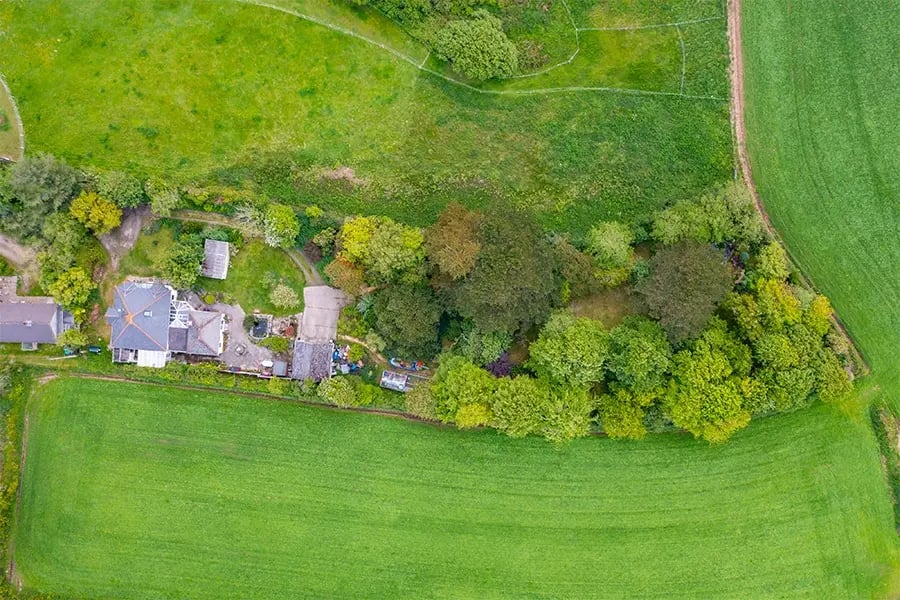The idea of building a home in the countryside is a dream shared by many: wide open skies, sweeping views and a closer connection to nature. But as idyllic as it may seem, the journey from vision to reality isn’t always straightforward. At Marraum, our architectural work in Cornwall has taught us that rural builds come with their own unique set of challenges.
If you’re thinking about building in the countryside, here are some key considerations to be aware of from the outset.
Navigating planning permission and rural policies
Rural areas often fall under more restrictive planning policies than urban settings. Many plots of land are classed as agricultural or are within Natural Landscapes (formerly AONB), which means you’ll likely face additional scrutiny when applying for planning permission.
Planning authorities are focused on protecting the landscape and ensuring developments meet strict environmental and design standards. If your plans are at odds with local guidelines or don’t demonstrate a need for rural development, they could be rejected.
This is where early stage guidance can make a huge difference. At Marraum, we provide planning and feasibility studies to help assess what’s possible for your site before committing to full-scale design work.
Access, infrastructure and connectivity
Remote locations can often lack basic infrastructure such as mains drainage, water, gas or even reliable road access. Building in the countryside may require significant investment in site access and utility connections, which can affect both your timeline and your budget.
Topography can also be a challenge. Sloping land or exposed coastal locations may demand creative design solutions and tailored construction approaches to ensure long-term durability and energy efficiency.

Environmental considerations
Rural sites are more likely to be home to protected species, ancient trees or sensitive ecosystems. Environmental impact assessments may be required before planning can be granted, particularly if your site is in a conservation area or close to natural habitats.
Designing responsibly is essential - not just to meet regulations, but to honour the landscape your home will inhabit. At Marraum, we approach each countryside build with a sense of environmental stewardship and a commitment to sustainable design.
Design expectations vs. restrictions
Designing a home that reflects your personality while also responding to the landscape can be a delicate balance. In protected rural areas, planners may expect designs to blend into the surroundings or follow specific vernacular styles. Striking a balance between vision and viability is key.
That doesn’t mean you have to compromise on character. With thoughtful design and a clear understanding of local requirements, it’s possible to create something striking, sensitive and personal.
Turning countryside ambition into architectural reality
Building in the countryside is a challenge, but one well worth embracing with the right team by your side. At Marraum, we help clients unlock the potential of rural sites with creativity, clarity and care. From planning hurdles to design finesse, we’ll guide you through every step of the journey.
Ready to explore your rural project? Get in touch with our team today to speak to our team of architects in Cornwall, or check out our previous projects for inspiration.



